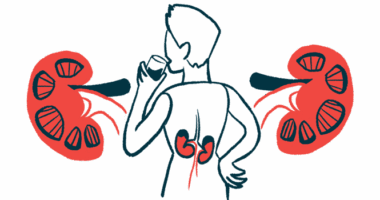GD Biomarker Chitotriosidase Not Associated with Symptom Severity in Untreated Patients, Study Reports

High activity of an enzyme called chitotriosidase (ChT) before treatment does not correlate with clinical or biochemical parameters in Gaucher disease, according to new research in Brazilian patients.
The findings also revealed a marked reduction in ChT activity with 12 months of treatment.
The study, “Chitotriosidase on treatment-naïve patients with Gaucher disease: A genotype vs phenotype study,” appeared in the journal Clinica Chimica Acta.
Plasma activity of ChT is used to monitor treatment efficacy in Gaucher. ChT, an enzyme produced by activated macrophages — immune cells where a type of fat (lipid) called glucocerebroside accumulates in GD patients — is encoded by the CHIT1 gene. The activity of ChT typically decreases with treatment, but increases again if treatment is discontinued.
Levels of ChT correlate with disease severity before treatment, while its activity is associated with enzyme replacement therapy (ERT) dosage in Gaucher. However, mutations in CHIT1 that reduce ChT activity limit its use as a biomarker.
The scientists determined the frequency of the most common CHIT1 gene variants, while also evaluating which factors are associated with plasma activity of the enzyme before treatment, in patients seen at the Reference Center for Gaucher disease of Rio Grande do Sul, in Brazil.
The study included 42 patients, 37 of whom had type 1 GD, two with type 2, and three with type 3. This group had 21 males and 21 females, whose mean age was 34.2 years (range 4-67 years). Thirty-seven patients were on ERT and two were on substrate reduction therapy, with a mean overall age at treatment start of 24.5 years. Seven patients had undergone a splenectomy (spleen removal).
ChT activity did not correlate with patients’ age, hemoglobin (the protein that carries oxygen in the blood), or platelet levels. It was similar between males and females and between patients who had an enlarged liver versus those who did not. All but one patient showed high ChT activity levels. However, this activity declined by approximately 63% at 12 months on therapy.
Eleven patients did not have any CHIT1 gene variant. Twenty had one heterozygous mutation (in one gene copy), three a homozygous mutation (in both gene copies) and a second heterozygous variant, and one had a homozygous mutation associated with reduced ChT activity. This variant consists in a duplication of 24 nucleotide pairs (dup24), the building blocks of DNA, and is the most frequently found mutation.
Also, one patient showed two homozygous variants, four had two heterozygous variants, and two patients had three heterozygous mutations.
Pre-treatment ChT activity was significantly higher in patients without dup24 than in those with heterozygous dup24 mutations. However, these two groups showed no differences after 12 months of therapy.
“In our sample, there is no evidence that higher activity of ChT is associated with a more severe symptomatology in untreated GD patients,” the researchers said. “The pre-treatment ChT levels appear to be mainly dependent on the presence/absence of the dup24 [variant].”



